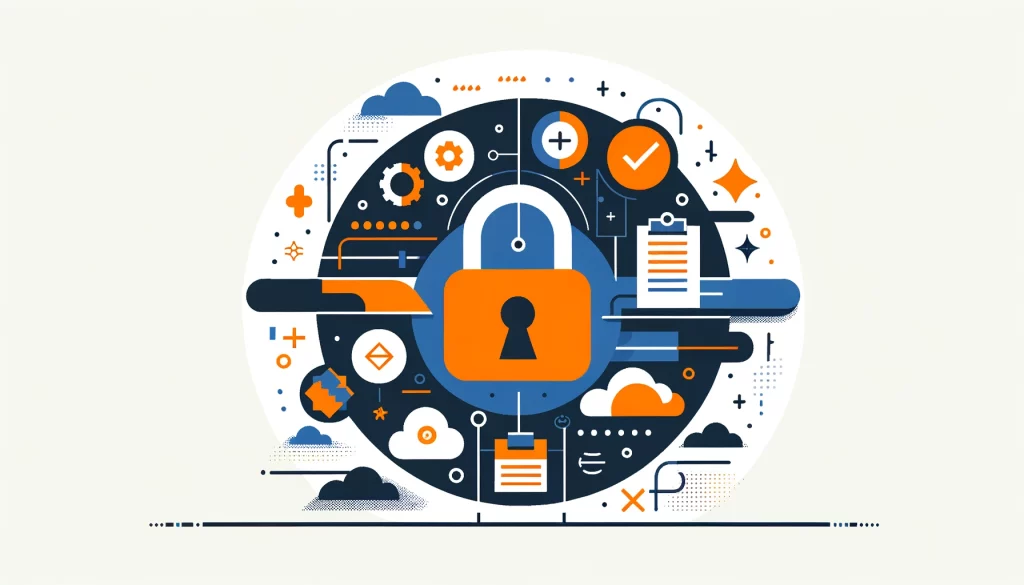
GDPR: General Data Protection Regulation

Organizations must prioritize data protection to keep this increasing volume of information secure. The European Union’s General Data Protection Regulation, known as the GDPR, is the primary law that governs data protection practices.
The GDPR applies to companies and individuals within the EU. It also regulates international organizations that have customers or users based in EU member states. Any business offering goods or services in the EU must comply with the General Data Protection Regulation.
What is the GDPR?
The General Data Protection Regulation is a comprehensive privacy and security law. Many consider it the strictest set of data protection rules in the world. The GDPR sets requirements for any organization that collects data from individuals in the EU.
The European Union implemented the GDPR on May 25, 2018. Organizations face potential fines of up to 20 million euros for violations. These steep penalties underscore the importance the EU places on data protection and privacy.
The GDPR’s Development
Europe has a long history of protecting privacy rights. In 1950, the European Convention on Human Rights included privacy as a fundamental right. As technology advanced, the EU passed the European Data Protection Directive in 1995 to address emerging data risks.
The 1995 directive established core data protection standards. It provided a foundation for member states to enact their own data privacy laws. However, the rapid growth of the internet soon rendered those regulations inadequate.
In response, the European Parliament approved the GDPR in April 2016. The GDPR’s publication marked a major step forward in the EU’s approach to personal data security and privacy. The law officially took effect in May 2018.
Key GDPR Requirements
At its core, the GDPR defines rules for collecting and processing personal data. It creates obligations for businesses and grants rights to individuals. It empowers Data Protection Officers (DPOs) to enforce compliance.
Organizations must meet these ten key requirements to maintain compliance:
- Process data lawfully, fairly, and transparently
- Limit data collection, processing, and storage to necessary purposes
- Uphold data subject rights
- Obtain clear consent for data processing
- Maintain a data breach register and report breaches promptly
- Incorporate data protection measures by design
- Conduct data protection impact assessments
- Safeguard data during transfers
- Appoint a Data Protection Officer if needed
- Train staff on GDPR provisions and breach reporting
Personal Data Under the GDPR
The GDPR takes a broad view of what constitutes personal data. Any information that can directly or indirectly identify a person falls under the GDPR’s scope. Names, email addresses, location details, ethnicity, gender, and biometric data all qualify as personal data.
Even pseudonymous data may fall under the category of personal information according to the GDPR. If someone could reasonably use the pseudonym to identify an individual, then it is personal data. It casts a wide net to maximize the law’s data protection coverage.
Steps to GDPR Compliance
Achieving GDPR compliance requires cooperation across an organization. Automated technology solutions can help businesses meet policy, security, and reporting requirements. A comprehensive compliance strategy should include these steps.
Raise GDPR Awareness
Start by increasing GDPR awareness throughout the company. Develop best practices and train employees to recognize potential breaches. Build a culture of security to ensure everyone understands their role in data protection.
Appoint a DPO
The GDPR mandates that certain organizations designate a Data Protection Officer (DPO). Public authorities and companies that process large volumes of sensitive data must appoint a DPO. Additional EU member state laws may also require naming a DPO.
Catalog Data Assets
To address data processing and storage issues, organizations must understand their data. Create a complete inventory of data types and map them across IT systems. Share these data catalogs with internal stakeholders to ensure they identify all storage locations.
Assess Risks
Use the data inventory to evaluate current practices against GDPR obligations. Include external vendors in the assessment to get a full picture of potential risks and compliance gaps.
Develop a Compliance Plan
Based on the risk assessment, create a roadmap to close compliance gaps. Outline the processes and technology changes needed to meet GDPR requirements. The plan may involve strengthening existing controls or implementing new measures.
Monitor Ongoing Compliance
The GDPR mandates “privacy by design.” This means organizations must proactively incorporate data protection into their operations. The DPO should partner with business and IT teams to ensure systems and workflows comply on an ongoing basis.
GDPR: The Gold Standard of Data Protection
The General Data Protection Regulation sets a high bar for data privacy and security. It gives individuals greater control over their personal information. The GDPR also requires organizations to be transparent and accountable in their data practices.
By meeting the rigorous standards, companies show customers that they value data protection. Compliance demonstrates a commitment to using personal data safely and ethically.
Though the GDPR presents challenges, it also creates opportunities. Organizations can build trust with customers by safeguarding their data. Embracing data protection can provide a competitive advantage in an era of increasing privacy concerns.
The GDPR’s reach extends beyond the borders of the EU. Many countries are using the General Data Protection Regulation as a guide for their own data protection laws. This is happening as global data sharing increases.
Embarking on the Path to Compliance
The journey to GDPR compliance demands focus and collaboration. All levels of employees must engage in data protection efforts. Leadership support is critical to implement the necessary changes.
Partnering with experienced advisors can help organizations navigate the complexity of the GDPR. Expert guidance enables companies to prioritize high-risk areas and execute an efficient compliance roadmap.
While full GDPR compliance may seem daunting, every step made toward better data governance is valuable. Improving data practices strengthens security and increases effectiveness. Organizations that commit to ongoing progress will be well-positioned to thrive.
The GDPR has elevated data protection to a board-level issue. It has brought attention to the critical importance of safeguarding personal information. It sets a clear expectation for organizations to handle data with integrity.
As the volume of data grows, so does the responsibility to protect it. The GDPR provides a comprehensive framework to guide company data practices. By embracing its principles, organizations can foster customer trust and demonstrate data leadership.
Making Data Protection a Priority
In today’s digital landscape, data is a precious resource. Organizations that prioritize data protection will be better equipped to unlock data’s value. Investing in GDPR compliance is an investment in strong, ethical data management.
Compliance is an ongoing process. The GDPR calls on organizations to weave data protection into the fabric of their practices. By making data security a core part of company culture, businesses can adapt to evolving risks and regulations.
The GDPR has set a new global standard for data protection. Organizations that embrace this standard will be well-positioned to thrive in an increasingly connected world. Prioritizing data protection is key to harnessing the power of data while maintaining the trust of customers and partners.
Conclusion
The General Data Protection Regulation has ushered in a new era of data protection. It has raised the bar for privacy and security standards worldwide. The GDPR gives individuals unprecedented control over their personal information and requires organizations to be transparent and accountable in their data practices.
Complying with the GDPR is not just a legal obligation – it is a strategic imperative. By meeting the GDPR’s rigorous requirements, companies can build trust with customers and distinguish themselves in the marketplace. Investing in data protection is an investment in the long-term success of the business.
The journey to GDPR compliance requires commitment and collaboration across the organization. It demands a fundamental shift in how companies approach data governance. Following the rules of the regulation is important.
This includes privacy by design and data minimization. Doing so helps in using data effectively. It also ensures that we respect individual rights.
In the end, the GDPR is about more than compliance – it is about trust. Building a data ecosystem that respects individual rights and fosters innovation is the focus. By following the General Data Protection Regulation, organizations can help create a safer and more trustworthy digital future.
